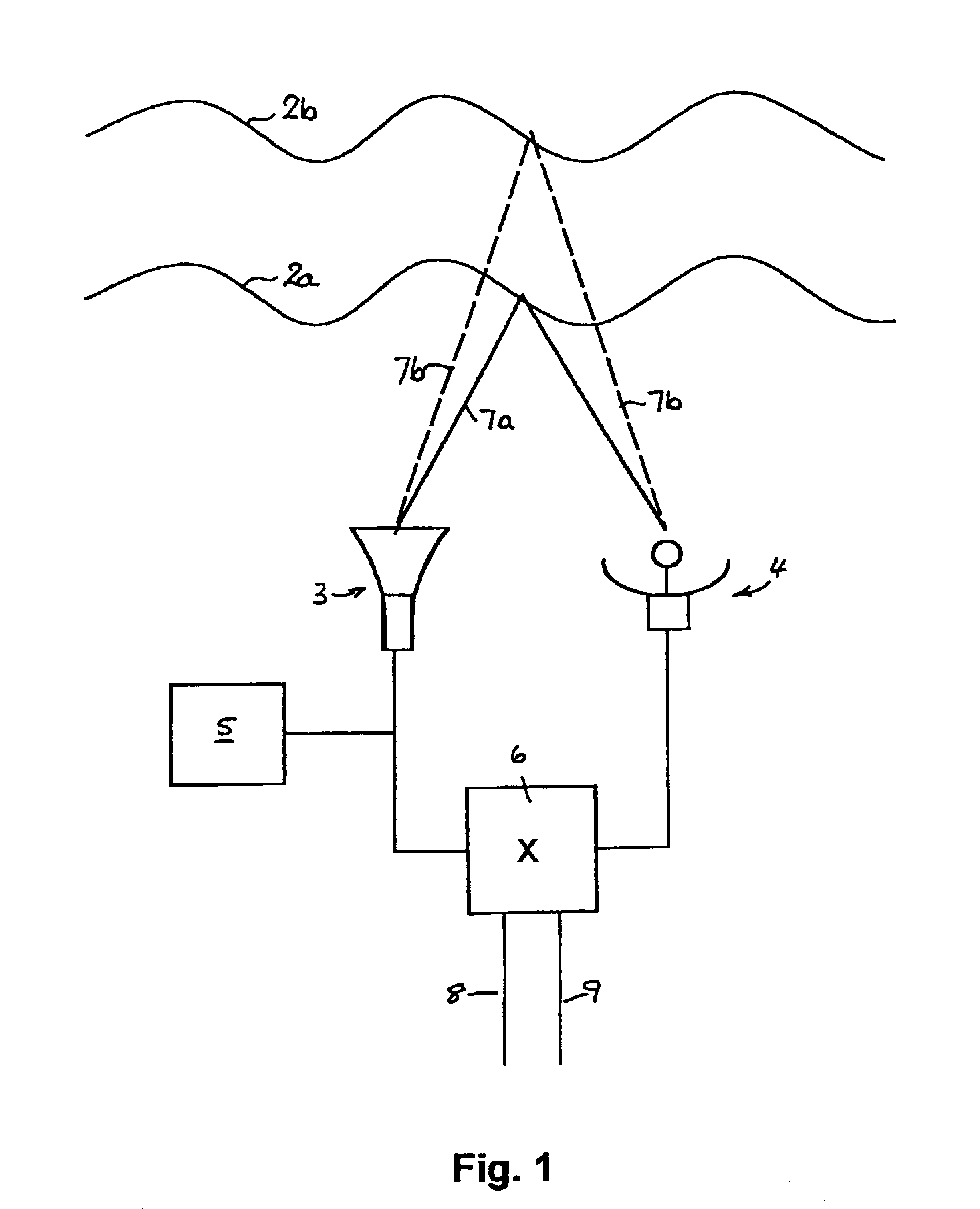Acoustic sounding
a technology of acoustic sounding and sound waves, applied in the field of acoustic sounding, can solve the problems of not being able to provide the discrimination required in demanding situations, and achieve the effect of enhancing the effect of both loudspeaker and microphon
- Summary
- Abstract
- Description
- Claims
- Application Information
AI Technical Summary
Benefits of technology
Problems solved by technology
Method used
Image
Examples
Embodiment Construction
Having portrayed the nature of the present invention, particular examples will now be described with reference to the accompanying drawings. However, those skilled in the art will appreciate that many variations and modifications can be made to the chosen examples without departing from the scope of the invention as outlined above. In the accompanying drawings:
FIG. 1 is a simple block diagram showing the principal components of an acoustic sounder for use in detecting TILs below 3000'.
FIG. 2 is a set of graphs showing a simple process whereby a transmitted chirp (a) can be combined with echo chirps (b) and (d) to generate useful outputs (c) and (e).
FIG. 3 is a more detailed block diagram of a sounding system employing Fourier domain comparison or mixing.
FIG. 4 is a flow-chart depicting a procedure for Fourier-domain processing of the transmitted and echo chirps in the system of FIG. 3.
FIG. 5 is a graph, derived from radiosonde measurements, showing variation of air temperature (Te) ...
PUM
| Property | Measurement | Unit |
|---|---|---|
| audio frequency | aaaaa | aaaaa |
| speed | aaaaa | aaaaa |
| altitude | aaaaa | aaaaa |
Abstract
Description
Claims
Application Information
 Login to View More
Login to View More - R&D
- Intellectual Property
- Life Sciences
- Materials
- Tech Scout
- Unparalleled Data Quality
- Higher Quality Content
- 60% Fewer Hallucinations
Browse by: Latest US Patents, China's latest patents, Technical Efficacy Thesaurus, Application Domain, Technology Topic, Popular Technical Reports.
© 2025 PatSnap. All rights reserved.Legal|Privacy policy|Modern Slavery Act Transparency Statement|Sitemap|About US| Contact US: help@patsnap.com



